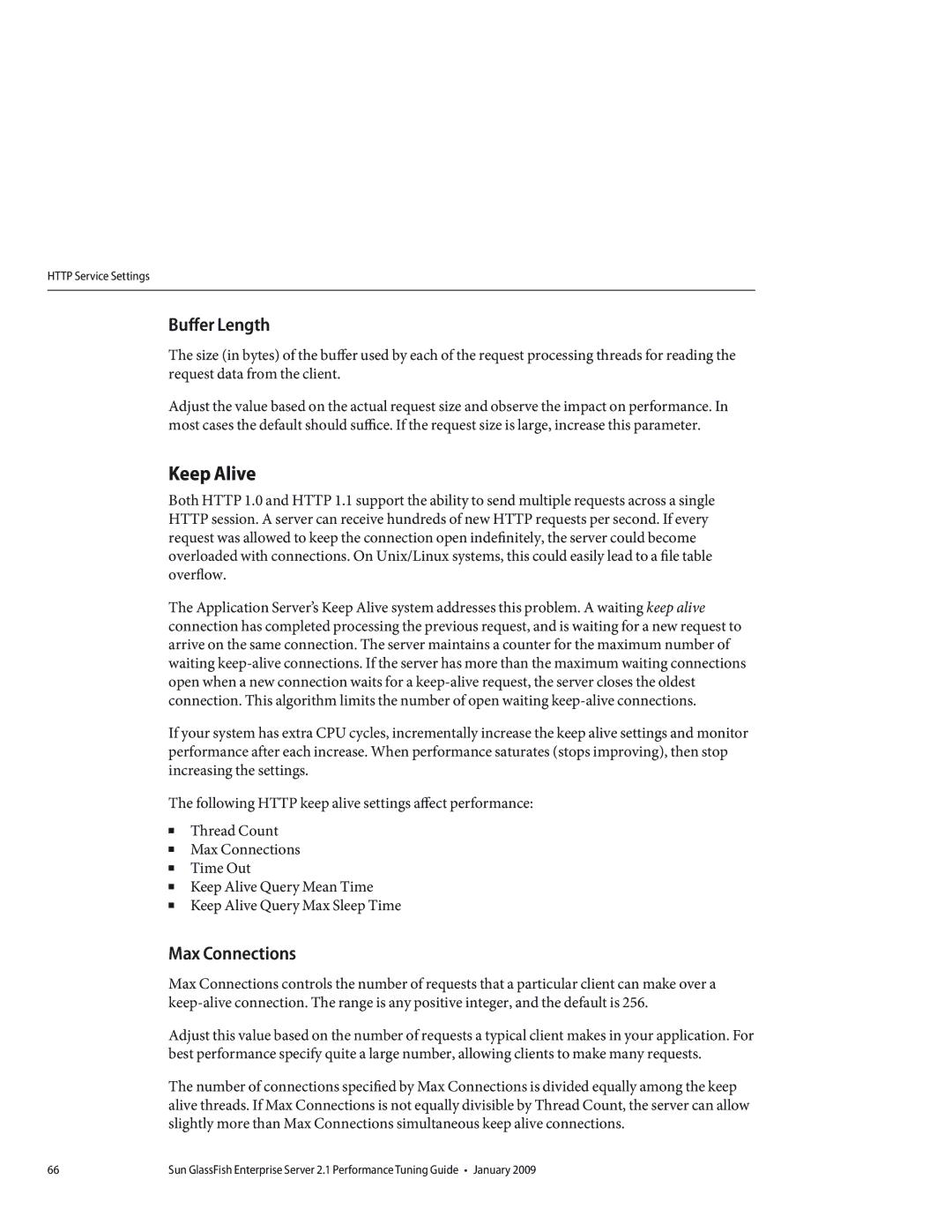HTTP Service Settings
Buffer Length
The size (in bytes) of the buffer used by each of the request processing threads for reading the request data from the client.
Adjust the value based on the actual request size and observe the impact on performance. In most cases the default should suffice. If the request size is large, increase this parameter.
Keep Alive
Both HTTP 1.0 and HTTP 1.1 support the ability to send multiple requests across a single HTTP session. A server can receive hundreds of new HTTP requests per second. If every request was allowed to keep the connection open indefinitely, the server could become overloaded with connections. On Unix/Linux systems, this could easily lead to a file table overflow.
The Application Server’s Keep Alive system addresses this problem. A waiting keep alive connection has completed processing the previous request, and is waiting for a new request to arrive on the same connection. The server maintains a counter for the maximum number of waiting
If your system has extra CPU cycles, incrementally increase the keep alive settings and monitor performance after each increase. When performance saturates (stops improving), then stop increasing the settings.
The following HTTP keep alive settings affect performance:
■Thread Count
■Max Connections
■Time Out
■Keep Alive Query Mean Time
■Keep Alive Query Max Sleep Time
Max Connections
Max Connections controls the number of requests that a particular client can make over a
Adjust this value based on the number of requests a typical client makes in your application. For best performance specify quite a large number, allowing clients to make many requests.
The number of connections specified by Max Connections is divided equally among the keep alive threads. If Max Connections is not equally divisible by Thread Count, the server can allow slightly more than Max Connections simultaneous keep alive connections.
66 | Sun GlassFish Enterprise Server 2.1 Performance Tuning Guide • January 2009 |
